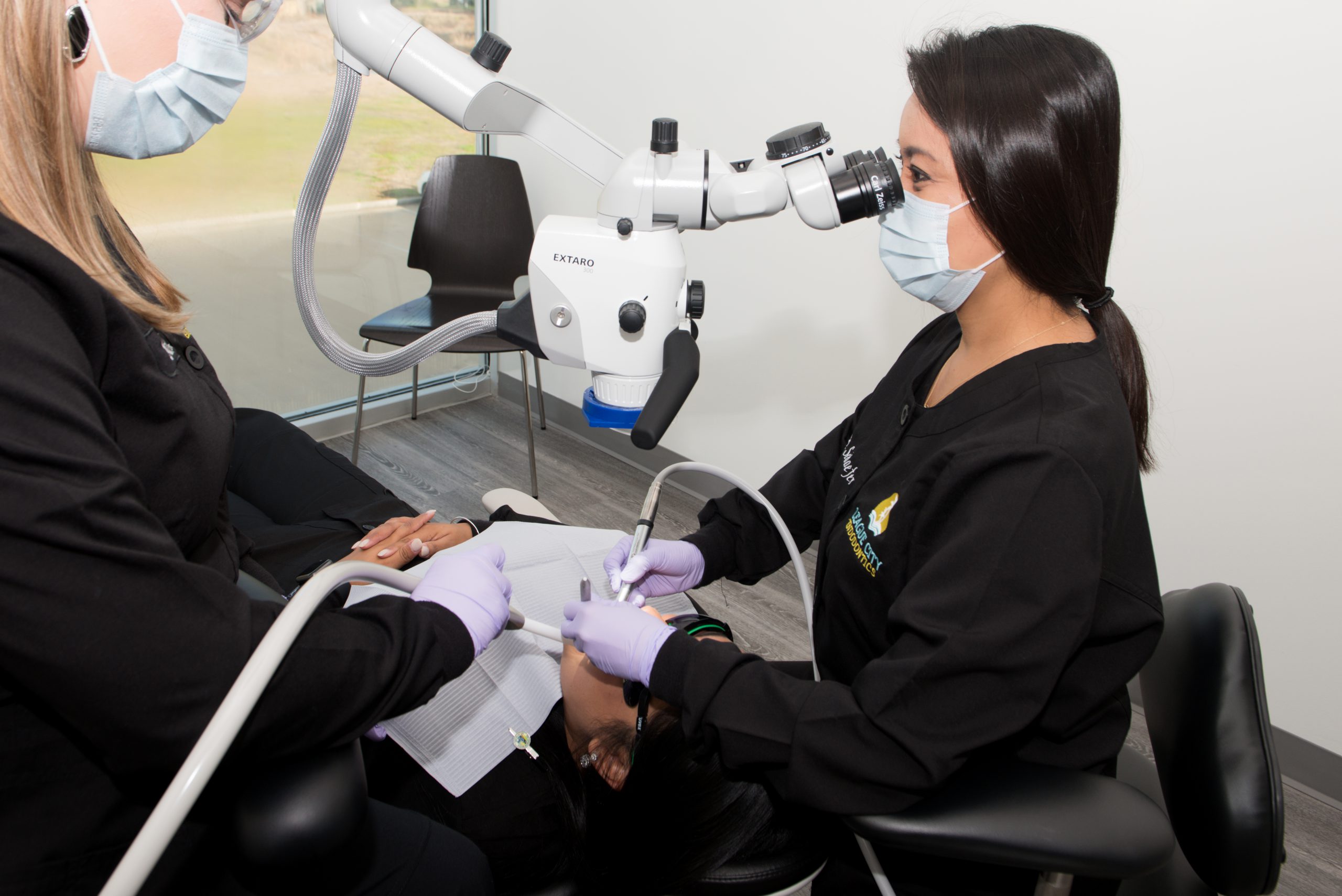
What is an Endodontist?
A dentist with a minimum of two or three additional years of advanced specialty education in diagnosing and saving teeth through root canal treatment
Endodontists are specialized dentists who provide only endodontic services in their practices, including diseases of the dental pulp, supporting structures, and other related problems. These procedures – often referred to as root canals – may range from routine to very complex due to narrow or blocked canals, unusual anatomy, or retreatments of previously treated teeth. Endodontists are also experienced at finding the cause of oral and facial pain that has been difficult to diagnose.
Some general dentists may perform endodontic treatment on some types of teeth. In other cases, however, a general dentist may rely on a specialist certified in endodontics to treat (i.e. save) their patient’s teeth. For example, this may be because the diagnosis is complicated or treatment is more difficult than normal, requiring microscopic surgery or high-resolution 3D imaging.
Aside from providing the highest quality treatments, Dr. Schaefer views her role as that of educator. She believes it is important that patients understand why they require treatment, what treatment involves, and what they can do to ensure the best possible outcome.
"Dr. Schaefer takes the time necessary to understand her patient's needs and communicate information as clearly as possible. She strongly believes a properly informed patient has the best chance of achieving the optimal result."
What is the science behind endodontics?
In order to understand Endodontic treatment, it helps to know something about the anatomy of a tooth. Teeth have several layers. The outside layer of the tooth is composed of a hard layer called Enamel. Enamel is supported by an inner layer called Dentin, which has at its center a soft tissue known as the Pulp.
The pulp contains blood vessels, nerves, and connective tissue that are responsible for forming the surrounding Dentin and Enamel during tooth development. The pulp receives its nourishment supply from vessels which enter the end of the root. Although the pulp is important during development of the tooth, it is not necessary for function of the tooth. The tooth continues to be nourished by the tissues surrounding it even after the pulp is removed.
